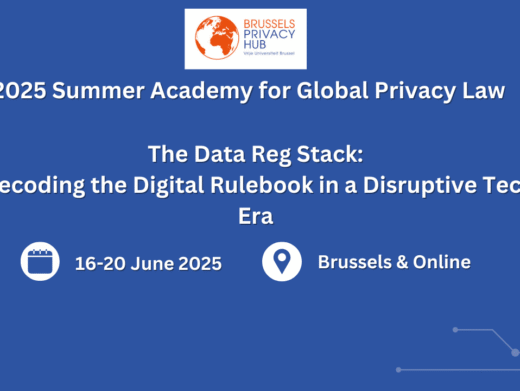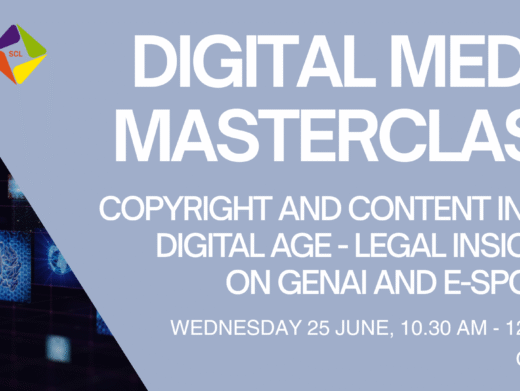The long-awaited decision of the Court of Justice of the European Union in SAS Institute Inc v World Programming Ltd Case 406/10 is to be welcomed as bringing certainty to the IT industry that functionality in a computer program is not protected by copyright. Whilst this will almost certainly disadvantage suppliers of certain established software programs, it should encourage third-party innovation and, ultimately, customers should benefit from the competition between suppliers.
The CJEU Decision in a Nutshell
The case of SAS v WPL was heard at first instance in the English High Court (SAS Institute Inc v World Programming Ltd [2010] EWHC 1829 (Ch)) by Arnold J, who referred certain questions to the CJEU in July 2010. The CJEU’s judgment was handed down on 2 May 2012. In the main, the decision followed the recommendations of Attorney General Bot, who delivered an Opinion in November 2011.
In summary, the CJEU found that:
1. The functionality of a computer program, including the programming language and the format of data files, constitute the overarching ideas behind a program, rather than forms of expression of that program, and so are not protected by copyright.
2. A person who uses a computer program in accordance with a licence is entitled, without the authorisation of the copyright owner, to observe, study or test the program functions to determine the underlying ideas and principles of that program.
3. Computer manuals (or parts of them) will be protected by copyright to the extent that they are, in themselves, the expression of the intellectual creation of the author. For instance, in this case, although keywords, syntax and commands are not sufficient on their own to be protected by copyright, their choice, sequence and combination may amount to an intellectual creation and be protected as a literary work. It is for the English court to decide whether a substantial part of those elements has been reproduced and so copyright infringed.
Revisiting the Background
SAS Institute Inc are the developers and owners of a long-standing set of integrated programs which enable users to perform analysis and processing, particularly statistical analysis (the SAS System). The main element of the SAS System is Base SAS, which allows users to write and run their own programs so that they can use the SAS System with their own data inputs. The user programs need to be written in SAS’s proprietary computer language to function. This has meant that SAS customers have had no alternative but to license the SAS System in order to run their existing SAS language application programs, or in order to create new ones. If a customer wanted to switch to another supplier’s software, they would need to re-write all their existing applications in another computer language.
World Programming Ltd is a competitor to SAS which developed a rival system. This system (the WPL System) recreated, as closely as possible, the functionality of the SAS System. The same inputs into the SAS System and the WPL System would create the same outputs. This enabled users of the SAS System to run their own application programs on the WPL System with little or no change in functionality. As a result, users were free to discontinue their licences for the SAS System, without the onerous task of rewriting all their programs in non-SAS computer language.
SAS brought a claim against WPL, alleging copyright infringement of both the functionality of their system and their user manuals.
The High Court Hearing
Before the High Court, WPL freely admitted that the response of the WPL System was intended to be, and was, identical to the response of the SAS System. The parties also agreed that WPL had not had access to the SAS source code, nor had it copied any of the text or the structural design of SAS’s source code, when developing the WPL System.
Arnold J recognised that previous English decisions (Navitaire v easyJet [2004] EWHC 1725 (Ch) and Nova v Mazooma [2007] EWCA Civ 219) had held that it is not an infringement of copyright in the source code of a computer program for a developer to study how the system works and then reproduce the functionality of the original program (provided the source code or object code has not been copied). Arnold J also recognised that this previous case law suggested that there is no copyright in the functionality of a program, nor in the programming language or data file formats used in the program.
SAS separately argued that WPL was also in breach of the licence agreement which it had taken out to use the ‘Learning Edition’ of the SAS System because it had used this edition for purposes outside the scope of the licence.
SAS also contended that WPL had infringed the copyright in its user manuals, both in designing the software itself and in creating its own user manuals.
Arnold J decided one aspect definitively: that there had been literal copying of the user manuals by WPL in the preparation of its own user manuals. Regarding the other issues, Arnold J provisionally followed Navitaire and Nova and found that WPL had not infringed the intellectual property rights in the software applications of SAS when it emulated the functionality of the SAS System in creating the WPL System. However, he considered that certain issues of European law were not acte clair.
As a result, Arnold J stayed the case and referred multiple questions to the CJEU in relation to the interpretation of Articles 1(2) and 5(3) of the Software Directive (91/250/EC) and Article 2(a) of the Copyright Directive (2001/29/EC). The questions were summarised by the CJEU in the following way:
1. Is Article 1(2) of the Software Directive to be interpreted as meaning that the functionality of a computer program, its programming language and the format of data files used in it to exploit certain of its functions, constitute a form of expression of the program and may as such be protected by copyright under the Software Directive?
2. Is Article 5(3) to be interpreted as meaning that a person who has obtained a copy of a computer program under licence may observe, study or test its functioning to determine the ideas and principles underlying any element of the program without further authorisation from the copyright owner, where the person carries out acts covered by the licence but with a purpose going beyond that set out in the licence?
3. Is Article 2(a) of the Information Society Directive to be interpreted as meaning that the reproduction, in a computer program or a user manual, of certain elements described in the user manual for another computer program constitutes infringement of the copyright in the latter manual?
The CJEU Decision in Detail
Functionality, programming language and data file formats
The CJEU relied on its own decision in Case C-393/09 Bezpecnostni softwarova asociace whereby it was held that it was the expression of a computer program, namely the specific source code or object code, which was protected under the Software Directive. In Bezpecnostni softwarova asociace this was interpreted to mean that reproduction in different computer languages was allowed. By extension, the CJEU ruled in the current case that the functionality, programming language and data file format of a computer program would not constitute forms of expression for the purposes of Article 1(2) and would therefore not attract copyright protection as a computer program.
The CJEU referred (at [40]) to Avocate General Bot’s opinion, ‘As the Advocate General states in point 57 of his Opinion, to accept that the functionality of a computer program can be protected by copyright would amount to making it possible to monopolise ideas, to the detriment of technological progress and industrial development’.
The Court further referred (at [41]) to the preparatory work behind the Software Directive in which the Commission explained that ‘the main advantage of protecting computer programs by copyright is that such protection covers only the individual expression of the work and thus leaves other authors the desired latitude to create similar or even identical programs provided that they refrain from copying’.
In short, the functionality of a computer program, including the programming language and the format of the data files, does not attract copyright protection under the Software Directive. It does however remain the case that the copying of source code or decompilation of object code to recreate functionalities would amount to copyright infringement in a computer program.
The CJEU also commented that computer language and data file formats, although not protectable under Article 1(2) of the Software Directive, might be protectable under Article 2(a) of the Information Society Directive if they were found to be the author’s intellectual creation in their own right.
In theory, this appears to open up the possibility of further protection for a computer program and, perhaps, a way of (indirectly) protecting functionality through copyright (albeit not under the Software Directive). However, it may be difficult to satisfy this threshold of the author’s own intellectual creation for computer languages and data file formats, and perhaps equally difficult to claim any such copyright is infringed by the use of similar languages or formats.
Studying the functionality of software under licence
On the basis of Article 5(3) and Article 9 and recital 18 of the Software Directive, the CJEU determined that the licensor of a computer program cannot prevent a licensee from observing, studying or testing the functioning of a program so as to determine the ideas and principles underlying that program. Further, it was found that these acts should not be prohibited by contract, and do not require the authorisation of the copyright owner, provided that the licensee remains within the framework of the licence agreement, and that the licensee’s acts do not infringe the licensor’s exclusive rights under Article 4 of the Software Directive.
Simply studying, observing and testing a program in order to reproduce its functionality in another program was not an infringement of the underlying software, so long as the information used in developing the new software was not obtained through decompilation or actual copying of the original software (source code or object code).
The user manuals
The CJEU referred back to its decision in Infopaq International A/S v Danske Dagblades Forening, Case C-5/08, in which it was held that independent parts of a work (in this case the user manuals) could be protected under Article 2(a) of the Information Society Directive, provided that they were in themselves an expression of the intellectual creation of the author. Elements such as the syntax, commands and keywords used in the user manual, when considered in isolation, consisted of words, figures or mathematical concepts which were not in themselves the intellectual creation of the author of the computer program. However, a copyright work could be created through the author’s choice of the words, commands and syntax used in the user manual. It was left as an open question for the national court to decide whether there had been copying of this expression of the author’s intellectual creation.
Back to the High Court
Now that we have received the CJEU decision, the case will revert back to the English courts and Arnold J must apply the CJEU answers to the particular facts.
The CJEU decision is broadly consistent with current English law. Following the decisions in Navitaire and Nova, which held that general ideas are not protected by copyright, it is only the expression of these ideas that attracts copyright protection. It is also consistent with this previous English case law that recreating the functionality of a computer program does not in itself infringe copyright. It is therefore unlikely that Arnold J will depart substantially from his original views.
It remains for Arnold J to decide whether any elements of the SAS manuals copied by WPL merit copyright protection and, if so, whether WPL have copied a substantial part of those elements in their development of the WPL System. Whilst this may not be regarded as the central part of the dispute, SAS will still want to preserve protection for at least some aspects of its SAS System.
Conclusion
In narrow terms, the CJEU decision is a serious setback to SAS as it is now clear that copyright does not protect the functionality of a computer program, nor the programming language used. At best, SAS can hope for a limited victory upholding their copyright in the SAS manuals. However, this will not prevent WPL from selling their competing system, nor discourage other companies from developing competing software which has the same functionality (provided that they do so within the bounds of permitted methods of observing, studying and testing the functionality of the original program).
For the industry as a whole, this is likely to be seen as a healthy result – encouraging competition, and preventing rights being claimed over functionalities. Certainly for the customer, the result is likely to be a positive one – they should be offered more choice as a by-product of the freedom of suppliers to compete with one another by creating programs with the same or similar functionalities.
Those looking to develop and protect proprietary systems will need to look to other barriers to entry, commercial and legal. Literal copying of object or source code (other than within the narrow exceptions) remains an infringement; manuals and related materials may be protected by copyright; whilst brand, additional developments and ‘value added’ services may help promote or maintain customer loyalty. But asserting copyright over the outcomes of a program will not be available to them – which, many would say, is the right result.
David Cran is a Partner in the IP, Technology & Outsourcing Group at RPC (Reynolds Porter Chamberlain LLP). Louise Williams is an Associate there: www.rpc.co.uk




